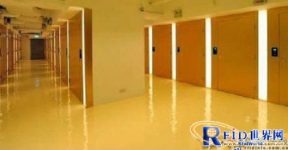
Hong Kong artworks are protected by RFID technology
[ad_1]
RFID technology, also known as electronic tag, radio frequency identification, is a communication technology that can identify specific targets and read and write related data through radio signals without the need to establish mechanical or optical contact between the identification system and the specific target. As one of the most popular technology elements, RFID is widely used in all walks of life.
BeautifulMind is an art restoration and storage studio in Hong Kong. Currently, it is using high frequency and ultra-high frequency RFID tags and zigbee wireless sensors to monitor artworks. Among them, high-frequency tags are used to monitor storage units, and UHF tags and readers are used for item-level tracking. The solution includes tags, readers, data software.
BeautifulMind includes 23 regular storage units and 5 VIP storage rooms. A high-frequency reader is installed at the entrance of each storage unit and storage room. The UHF channel reader is mainly used to track the artwork leaving the storage unit or the storage room, and the Zigbee sensor monitors the temperature, humidity and other information of the environment where the artwork is located. The data software developed by Hang Lung Technology is installed on the server of the studio to manage the data collected by tags and sensors. In addition, high-frequency readers, high-frequency and ultra-high-frequency tags are also provided by Henglong Technology Company.

RFID reader installed at the door of the storage room
The studio offers three main services: restoration of professional artwork, art training, and storage of art collections. Before installing the above solutions, studio managers have been looking for technological solutions to ensure the safe storage of artworks.
Entering and leaving the storage room requires an access card embedded with a 13.56MHz passive high-frequency RFID tag, which conforms to the ISO14443A standard. The studio employee is in the form of a wristband, and the art owner is in the form of a card.
The artworks entering the storage room must first be pasted with passive EPCGen2 UHF RFID tags, in which the tag chip adopts AlienHiggs-3 chip and is packaged by Henglong Technology. The unique code of the tag is associated with information such as the owner of the artwork and the storage unit where it is located. A total of 37 UHF RFID readers are installed in the studio. AlienALR9650 reader/writer is installed at the exit of the storage room, and a reader/writer is also installed inside the VIP storage room. In addition, AlienALR9900 readers are installed at the entrance to the main passage of the storage room, the training room, and the repair room.
If the artwork is moved out of the storage room, the reader at the door reads the ID of the tag, and the background data software will calculate the location of the artwork and the time of entry and exit.
The RFID technology solution in the VIP storage room is being implemented and is expected to be completed in June this year. The security factor in the VIP storage room is higher, and each shelf containing artworks is equipped with RFID read-write antennas to ensure real-time reading of all tag data. The read data is sent to the background data processing software. VIP members can log in to the website to view and obtain the corresponding stored data, and can also see the live work through the camera.
Zigbee sensors are installed in each storage unit and VIP storage room to measure the temperature and humidity of the storage environment. The sensor transmits data over 2.4GHz to the gateway receiver, which is then forwarded to the backend database. The background processing software not only collects data such as temperature and humidity, but also issues an alarm when the stored environmental data exceeds a set threshold.
[ad_2]



